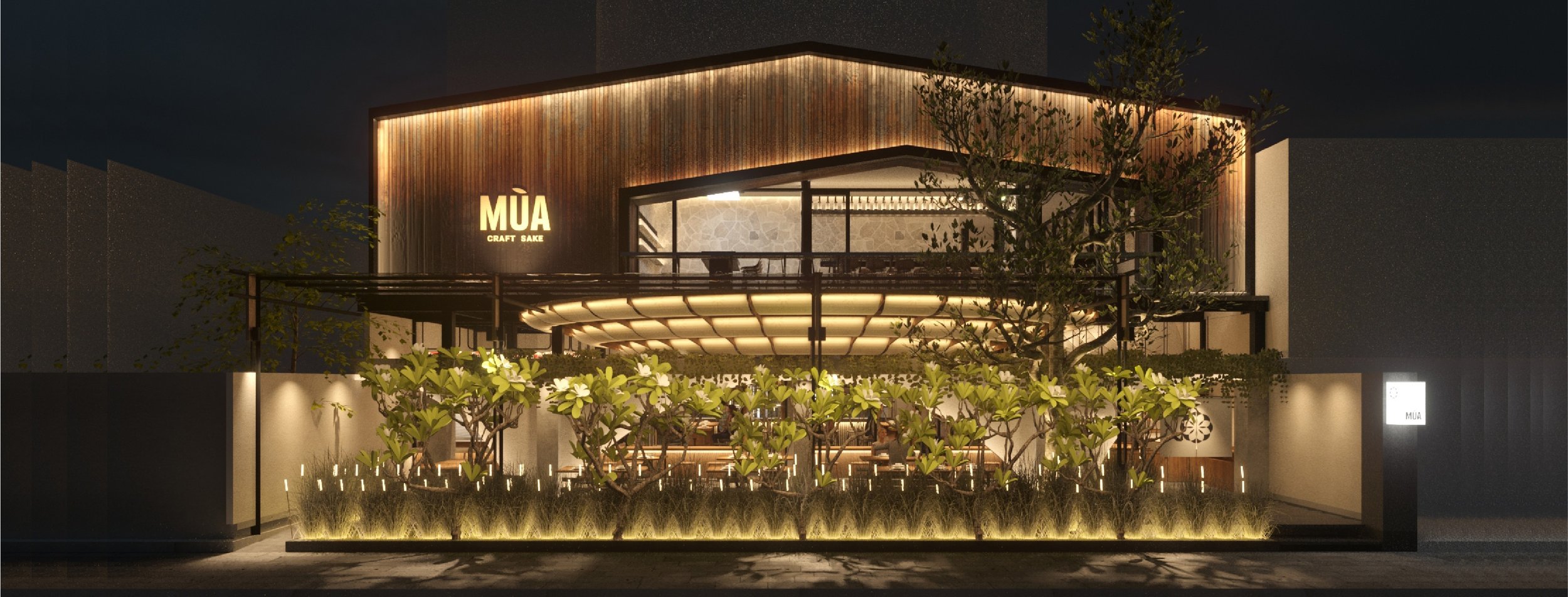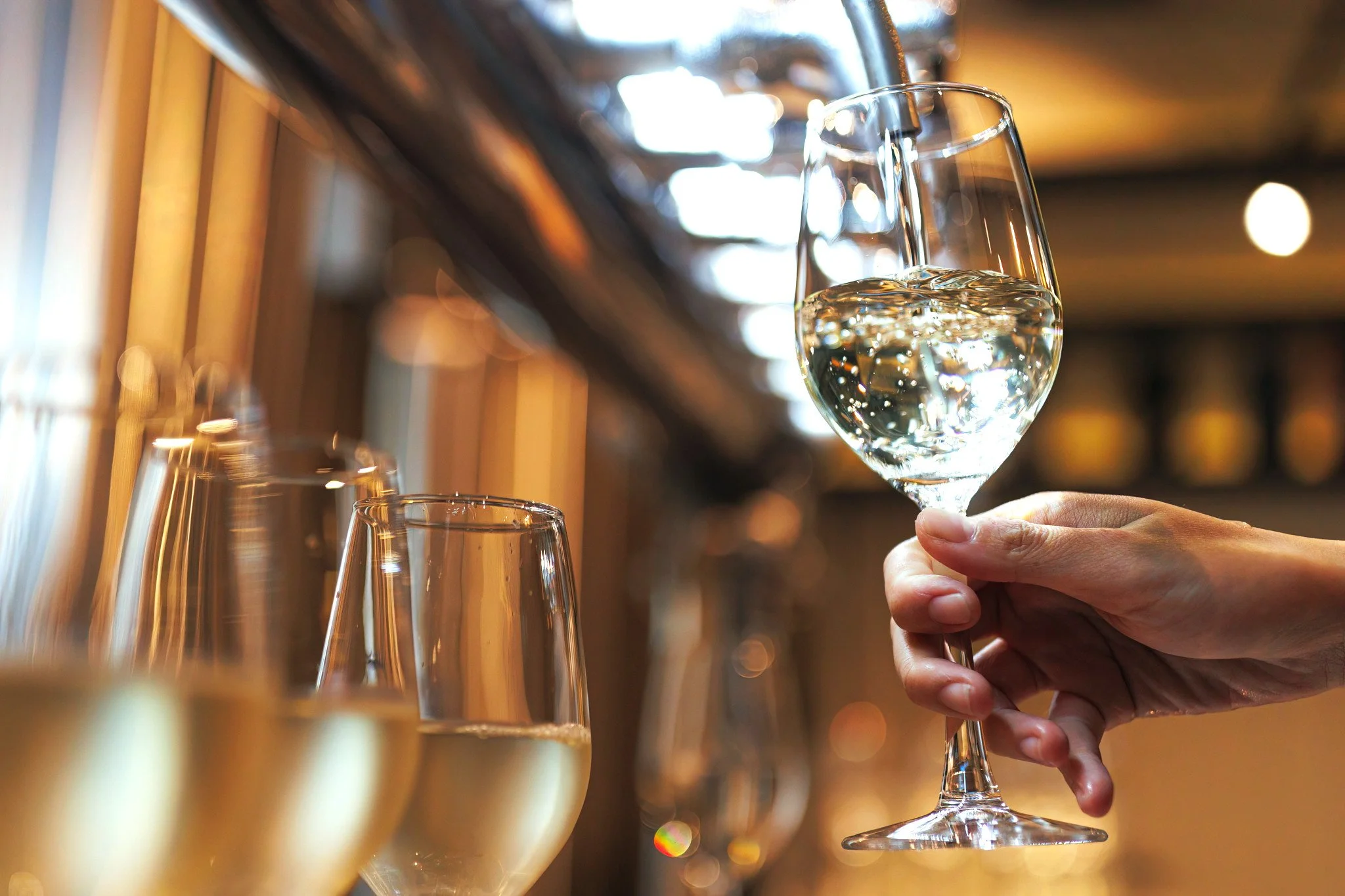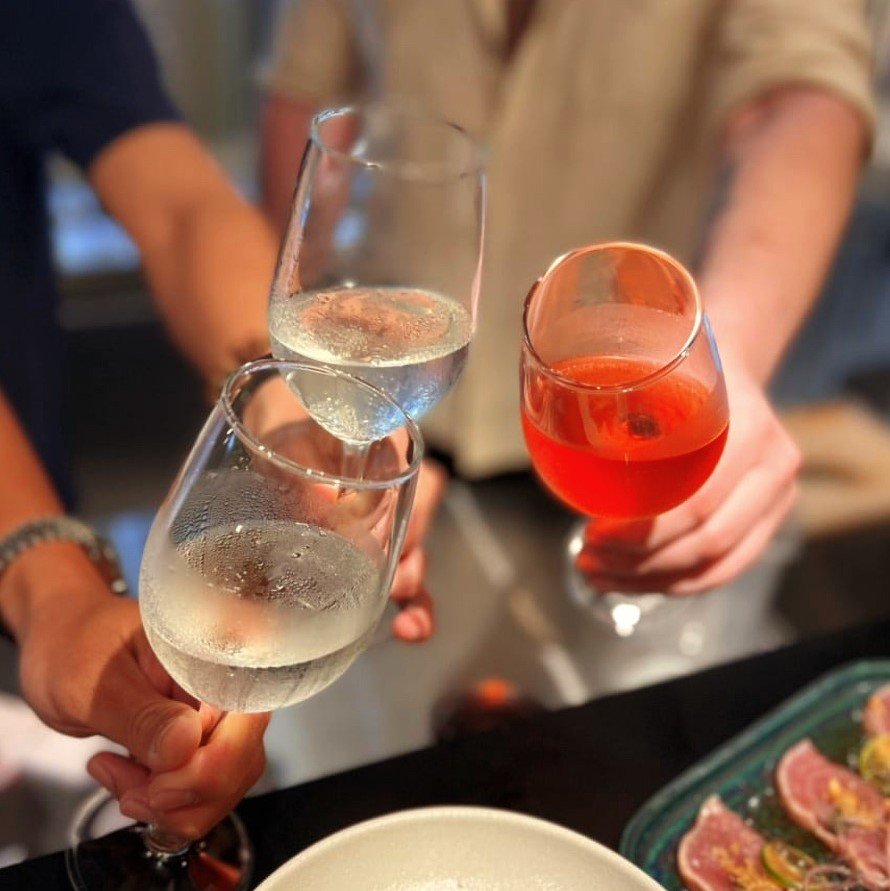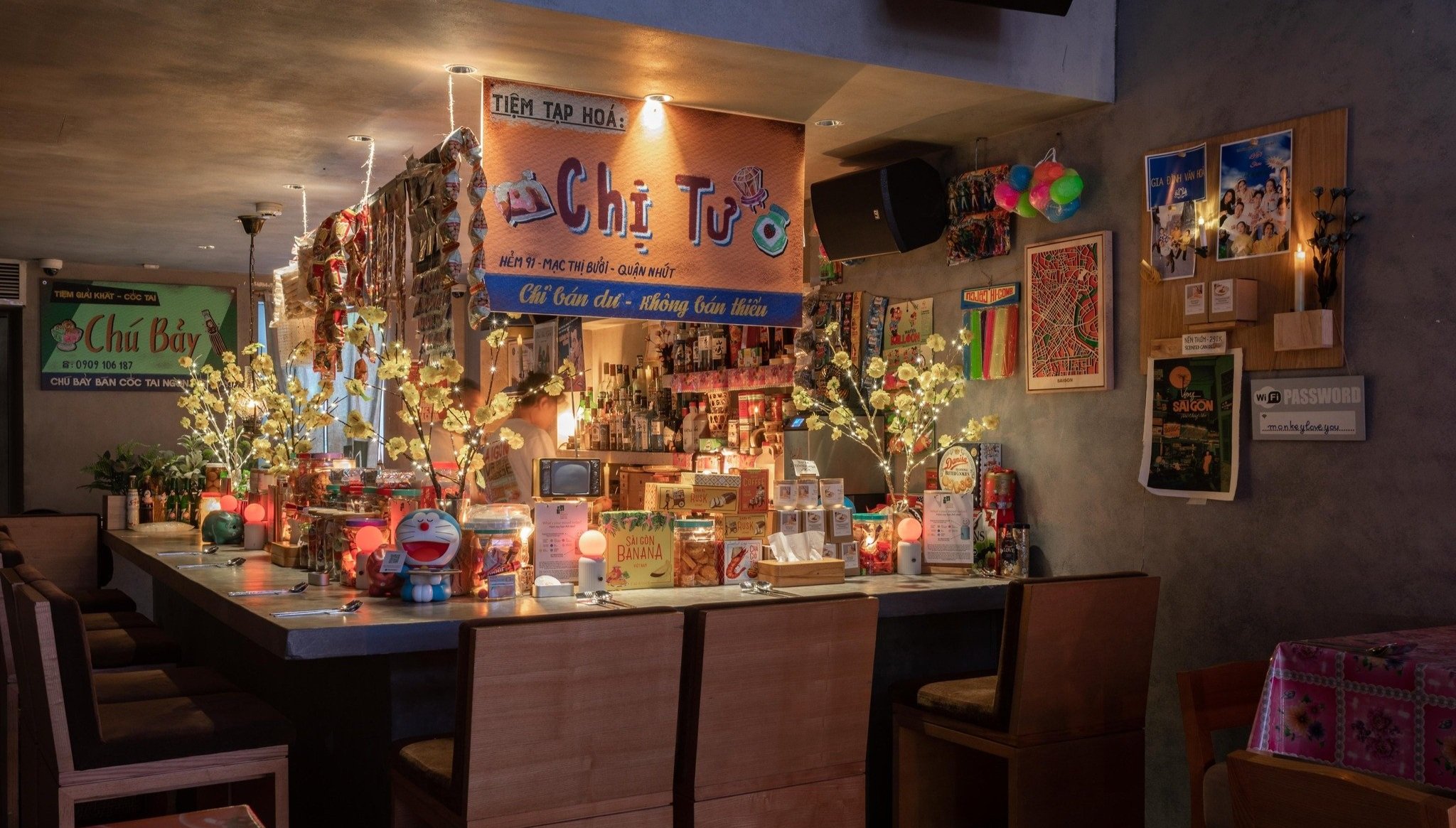Inside MÙA Craft Sake, Vietnam’s first craft sake brewery
Photo courtesy of Mùa Craft Sake
In Vietnam, the word ‘craft’ typically relates to beer, but not in the case of MÙA Craft Sake, Vietnam’s first craft sake brewery and restaurant. I catch up with the duo behind Mua (Lead Brewer Troy Kelly and Chef Tru Lang) who are adapting ancient techniques to create a distinctly modern Vietnamese craft liquor.
Why sake? Is there a huge demand for it here?
Between the founders and shareholders, there’s a deep appreciation for Japanese culture, cuisine and above all, sake. Of course, favourable market conditions such as global growing demand for sake (the sake market is expected to hit 10 billion USD by 2026), an uptick in upscale high-end dining in Vietnam (sake’s subtle flavours make it a great complement to fine dining and seafood) and an already strong footprint of Japanese food and drink joints, indicate great potential for sake in Vietnam.
However, the awareness and appreciation for sake are still not very big compared to craft beer, soju or gin. But the new consumer generation is showing an appreciation for craft beverages and hopefully, that spills over to sake.
Photo courtesy of Mùa Craft Sake
What is your goal in making craft sake?
The original goal was to tell the story of Vietnamese ingredients and how deeply connected rice is as a lifeblood crop in Vietnam and of course, share our love for sake, a symbol of Japanese craftsmanship. For MÙA Craft Sake, we also partnered up with a Japanese brewery named Heiwa Shuzo, which is an award-winning sake brewery with an 80-year tradition in brewing sake. Their sakes have been known for brewing some of the best sakes in the world. Our goal is to combine these two stories and share sake with a new generation in a modern way that keeps it interesting and connect it with the beauty and purity of Vietnamese rice.
Photo courtesy of Mùa Craft Sake
What’s the process of making your craft sake?
Our process begins in the rice field. We select Vietnamese-grown rice that has the right qualities for sake-making. Once the rice has been selected, we grow a special mold ubiquitous to Japanese food and drink - koji, which is used in products such as miso, shoyu, and of course, sake.
Then, we spend three days tending to our koji as it grows on steamed rice to derive the enzymes necessary for turning the starchy rice into sugar. Next, we add water, koji rice, and regular rice to our fermentation tank where the koji will turn the rice into sugar, and the yeast we introduce will turn the sugar into alcohol. This fermentation process goes on for about 20 to 25 days. The result is a sake rich in flavour and alcohol, which we then press, filter and bottle for consumption.
What does it taste like and where do you draw inspiration from?
Our sake is fruit-forward with notes of apple, guava, and melon with a subtle nuttiness from the rice. From the beginning, we wanted to create a sake that’s easy to drink and approachable. This is why the Heiwa Shuzo ‘KID’ series is one of our biggest influences and why we teamed up with the Heiwa Shuzo team to create a balanced sake for the Vietnamese palate.
Mùa’s fruit-flavoured sakes with notes of apple, guava, and melon (Photo courtesy of Mùa Craft Sake)
Tell me more about namazake - what is it and how does it differ from normal sake?
Nama means fresh, so namazake means fresh, unpasteurised and non-filtered sake that you get straight out of the tank. Typically, to make sake shelf-stable, it is pasteurised twice - once before and after bottling. This means sake that undergoes less than these 2 pasteurisation steps can be considered namazake as it continues to ferment.
The result is a sake with stronger fruity and floral aromas that would have otherwise been diluted during the second pasteurisation process. The fruit is sharper and I think it even pairs better with food as there’s a zippiness that cuts through meats and heavy starches. More importantly, I think the beauty of sake is that uniqueness can come from the brewery itself, not just the ingredients used - two breweries could use the same ingredients but the results can be drastically different because the individual breweries differ in their brewing methods.
How are you using local ingredients to infuse flavours?
We are one of the only namazake producers in Vietnam, especially in the quantities that we are producing. We use natural seasonal fruit infusions (no artificial flavouring) that you would never see Japan or in Vietnam either. It’s all-natural and being namazake, it tends to change over time and the fermentation doesn’t stop so the taste changes throughout.
This was a pretty extensive trial and error process starting with research on the different local seasonal fruits in Vietnam because that’s part of the story that we want to tell here. We’re continuously experimenting with different herbs, fruits and spices and working on getting the sake as stable as possible!
Photo courtesy of Mùa Craft Sake
Will you be retailing this sake soon?
We are working on it! We’re looking to distribute our sake kegs to other bars and F&B outlets and of course, bottling it for wider distribution. For now, we’re focusing on promoting our taproom and letting people know what craft sake is - a lot of it in Vietnam is about education because many people haven’t had it before.
Food
Photo courtesy of Mùa Craft Sake
What can we expect from the menu?
I (Chef Tru) lived and worked in Japan for approximately 5 months after decades-long fascination and appreciation for Japanese cuisine and culture. There, I had some of the best food I’ve ever had and through Mua Craft Sake, I want to continue telling the story of my time in Japan, its influence on me as a chef and its influence on global cuisines.
Going back to Vietnamese ingredients and the story we’re trying to tell, I combine elements of ‘izakaya culture’ - intimate, social, casual neighbourhood joint - with local Vietnamese ‘nhau’ culture, which is more communal and experienced in larger groups. So on the menu, you’ll see a cross-marriage between both Vietnamese and Japanese ingredients as well as techniques and also in the restaurant layout - smaller tables for couples as well as longer ones for bigger groups.
What was the thought process in creating a sake pairing menu?
First of all, we’re customising the food for the Vietnamese market and the second thing is drawing on Japanese tradition, food that goes with sake tends to be very savoury and salty, very rich and fatty. We definitely drew inspiration from a traditional sake menu but also looked at pairing sake (fruit flavours) with seafood, particularly raw seafood.
Photo courtesy of Mùa Craft Sake
What can we expect next year?
This year we’re focusing solely on the taproom and educating the market about sake. The more people try the sake and realise there’s another craft beverage option available in the market, the better it is for our long-term plan when we begin distributing further down the line. But for now, we’re focusing on awareness and experience.
Address: 7 Le Ngo Cat Street, Vo Thi Sau Ward, District 3, Ho Chi Minh City, Vietnam Ho Chi Minh City, Vietnam
Opening hours: 5 - 11pm daily (closed on Sundays)
Facebook Page: https://www.facebook.com/muasake.vn




















Like what you read?
Discover Vietnam’s coming-of-age food and drink scene with one of our tours and experiences exclusively available at Saigon Social